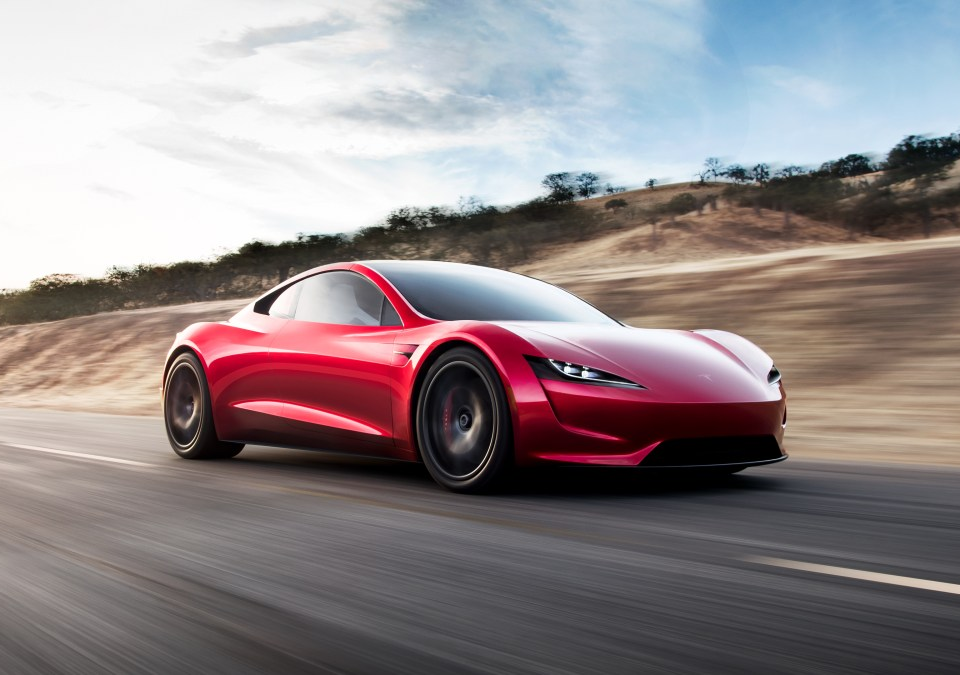
Tesla’s new growth plan is centered around mysterious cheaper models
April 26, 2024
Tesla launches new Model 3 Performance variant to rev up demand
April 29, 2024
Welcome back to TechCrunch Mobility — your central hub for news and insights on the future of transportation. Sign up here — just click TechCrunch Mobility — to receive the newsletter every weekend in your inbox. Subscribe for free.
Tesla is back in the news cycle and our crystal ball says it’s one of those long-term affairs. The week kicked off with layoffs — about 10% of its more than 140,000-person workforce — and CEO Elon Musk declaring he was going “balls to the wall” on autonomy. It ended with a Cybertruck recall. Cool cool.
There’s lots more in the newsletter than just Tesla — although before we move on, do check out Sean O’Kane’s scoop about the company’s 1,800-mile Tesla Semi charging corridor program. Read on to catch up on Serve Robotics’ public market debut, a week of highs and lows for Waymo, and more.
Let’s go!
A little bird
While much of our focus is on startups and Silicon Valley, we do have some little birds in Washington, D.C.
A little bird told us recently that federal regulators are getting close to publishing a Notice of Proposed Rulemaking on autonomous vehicle regulations, which would be the first set of federal guardrails proposed for the industry.
Our source said the Federal Motor Carrier Safety Administration (FMCSA), which regulates commercial vehicles in the U.S., should have a proposal out by this summer, fall at the latest. We’re told that the federal ruling on AVs will likely establish a minimum safety standard for AVs to operate on public roads but that state governments could enforce stricter regulations within their own borders. We’ve been hearing about discussions and plans around federal AV regulations for years now. Have we finally started to make headway? We shall see.
Got a tip for us? Email Kirsten Korosec at [email protected], Sean O’Kane at [email protected] or Rebecca Bellan at [email protected]. If you prefer to remain anonymous, click here to contact us, which includes SecureDrop (instructions here) and various encrypted messaging apps.
Deal of the week
Serve Robotics, the Nvidia- and Uber-backed sidewalk robot delivery company, hit the public markets this week via a reverse merger. Serve expects its public debut to bring in around $40 million in gross proceeds, funding that will go toward R&D for future robots, manufacturing of new robots, geographic expansion and more.
Serve’s goal is to increase its fleet from the 100 robots deployed today around Los Angeles to 2,000 robots across multiple U.S. cities by the end of 2025, via a partnership with Uber Eats. Serve has huge revenue ambitions, with plans to generate between $60 million and $80 million in annual revenue by that same deadline. In 2023, Serve brought in $207,545 in revenue at a loss of $1.5 million.
FWIW, Uber and Nvidia are still shareholders, but their shares in the company are decreasing with this debut. Pre-IPO, Uber and Nvidia held a 16.6% stake and 14.3% stake, respectively. Once the offering closes, those stakes will change to 11.5% and 10.1%, per regulatory filings.
Serve’s share price was $4 at market open on Thursday, and it closed that day at around $3.
Other deals that got my attention …
Found Energy, a startup that uses waste aluminum to generate heat and hydrogen, raised a $12 million seed round, but Tim De Chant’s story on the company is about so much more.
Getir, a Turkish delivery company that was once worth $12 billion, is reportedly weighing asset sales and exits from non-core markets as investors put the pressure on to cut losses.
Swtch Energy, a company building EV charging solutions for apartment buildings, raised $27.2 million in a Series B to expand its charging network and boost the tech behind its charging and energy management solutions. Blue Earth Capital led the round with participation from Alantra’s Energy Transition Fund Klima, Active Impact Investments and GIGA Investments Corp.
Notable reads and other tidbits
ADAS
Mobileye has secured orders to ship 46 million of its EyeQ6 Light ADAS chips over the next few years to automakers. Multiple models launching this year will feature the chip, which promises to deliver improved sensing of wet roads, detection of and reaction to objects at a greater distance, and better ability to read key text phrases on road signs. TechCrunch had the chance to dig into this, and our main takeaways are that automakers will probably love this chip because it’s more powerful than Mobileye’s last chip, but it’s the same price.
Autonomous vehicles
Waymo has begun initial data collection and mapping in Atlanta, the company’s latest geographic win. The Alphabet-owned company didn’t say whether it plans to launch in the Georgian city or any other city it is mapping in, such as Washington, D.C., and Buffalo. Aside from San Francisco, Waymo has launched commercial robotaxi services in Los Angeles and Phoenix, with Austin planned for the end of this year.
But with ups, come downs. Six Waymo vehicles also got caught blocking traffic to an on-ramp in San Francisco. The vehicles were caught between a construction zone and the on-ramp and had to pull over to await rescue. A spokesperson told TechCrunch that while Waymo does have the green light to go fully driverless on freeways in San Francisco, the company has not yet pulled the driver out.
Electric vehicles, charging & batteries
General Motors launched a home EV charger and vehicle-to-home (V2H) kit that lets a home pull energy from an EV battery in the event of a blackout. Customers in California, Florida, Texas, Michigan and New York can purchase today.
Gogoro, the two-wheeler battery-swapping company, and TSMC, a global semiconductor company, are partnering to introduce 15 GoStations across Taiwan that use 100% clean energy. They’ll also be launching Gogoro’s scooter-sharing service in TSMC’s headquarter city, Hsinchu, and expanding the charging network in the city.
TeslaCrunch
We’ve been all over Tesla this week, so let’s dive in.
The week started out with company-wide layoffs that affected at least 10% of the entire 140,000-person organization, with some teams seeing 20% of their staff gutted. Two high-profile executives departed Tesla as well: Drew Baglino, Tesla’s SVP of Powertrain and Energy, and Rohan Patel, VP of Public Policy and Business Development. Patel told TechCrunch he left because of “[b]ig overall changes” at the company that he declined to specify. In an email sent to the company, CEO Elon Musk said the cuts were necessary to increase productivity and prepare for Tesla’s “next phase of growth.”
(Psssst! Don’t want to read about Tesla layoffs and what comes next? You can watch about it instead.)
Many of those who were cut, sources say, were high performers who just happened to be working on lower-priority projects. Sources at Tesla also told TechCrunch the company made the cuts because it expects poor first-quarter earnings. Deliveries were subpar, and all those price cuts last year that continued early into 2024 likely had an effect on Tesla’s margins. Deliveries were down in Q1 year-over-year, despite the $200,000 Tesla spent on advertising on X, per our reporting.
Which might be why Tesla ditched its EV inventory price discounts this week. On X, Musk said this move was in line with Tesla’s strategy to “streamline the whole Tesla sales and delivery system.”
These changes in general, and the layoffs in particular, are made more stark by Tesla’s proxy statement that calls on the board to reinstate Musk’s $56 billion payout, which a Delaware judge earlier this year voided. In a huff, Musk threatened to reincorporate Tesla in Texas instead, and it appears that plan will also be put to the board soon.
Meanwhile, on the charging front, Tesla is moving forward with its plan to build an electric big rig charging corridor stretching from Texas to California, despite being snubbed by a lucrative federal funding program that’s part of Biden’s Bipartisan Infrastructure law.
Tesla this week also had to recall the 3,878 Cybertrucks that it has delivered to customers to date over faulty accelerator pedals that can get stuck. I know what you’re thinking. Finally we know how many Cybertrucks Tesla delivered.
This week’s wheels
I’ve been in a handful of new vehicles and I’m eager to share my thoughts, but we’re also running out of space this week. In the coming issues, we’ll have some takes on electric bikes, the 2024 Lexus LC 500h, the 2024 Mercedes-Benz eSprinter and more.
See y’all next week!






